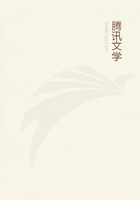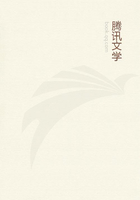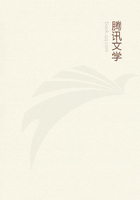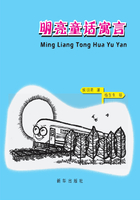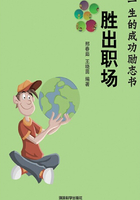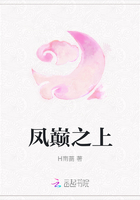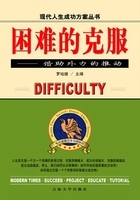THE middle of the seventeenth century saw the profession thus far on its way--certain objective features of disease were known, the art of careful observation had been cultivated, many empirical remedies had been discovered, the coarser structure of man's body had been well worked out, and a good beginning had been made in the knowledge of how the machinery worked--nothing more. What disease really was, where it was, how it was caused, had not even begun to be discussed intelligently.
An empirical discovery of the first importance marks the middle of the century. The story of cinchona is of special interest, as it was the first great specific in disease to be discovered. In 1638, the wife of the Viceroy of Peru, the Countess of Chinchon, lay sick of an intermittent fever in the Palace of Lima. A friend of her husband's, who had become acquainted with the virtues, in fever, of the bark of a certain tree, sent a parcel of it to the Viceroy, and the remedy administered by her physician, Don Juan del Vego, rapidly effected a cure. In 1640, the Countess returned to Spain, bringing with her a supply of quina bark, which thus became known in Europe as "the Countess's Powder" (pulvis Comitissae). A little later, her doctor followed, bringing additional quantities. Later in the century, the Jesuit Fathers sent parcels of the bark to Rome, whence it was distributed to the priests of the community and used for the cure of ague; hence the name of "Jesuits' bark." Its value was early recognized by Sydenham and by Locke. At first there was a great deal of opposition, and the Protestants did not like it because of its introduction by the Jesuits. The famous quack, Robert Talbor, sold the secret of preparing quinquina to Louis XIV in 1679 for two thousand louis d'or, a pension and a title. That the profession was divided in opinion on the subject was probably due to sophistication, or to the importation of other and inert barks. It was well into the eighteenth century before its virtues were universally acknowledged. The tree itself was not described until 1738, and Linnaeus established the genus "Chinchona" in honor of the Countess.[1]
[1] Clements R. Markham: Peruvian Bark, John Murray, London, 1880; Memoir of the Lady Anna di Osoria, Countess of Chinchona and Vice-Queen of Peru, 1874.
A step in advance followed the objective study of the changes wrought in the body by disease. To a few of these the anatomists had already called attention. Vesalius, always keen in his description of aberrations from the normal, was one of the first to describe internal aneurysm. The truth is, even the best of men had little or no appreciation of the importance of the study of these changes. Sydenham scoffs at the value of post-mortems.
Again we have to go back to Italy for the beginning of these studies, this time to Florence, in the glorious days of Lorenzo the Magnificent. The pioneer now is not a professor but a general practitioner, Antonio Benivieni, of whom we know very little save that he was a friend of Marsilio Ficino and of Angelo Poliziano, and that he practiced in Florence during the last third of the fifteenth century, dying in 1502. Through associations with the scholars of the day. he had become a student of Greek medicine and he was not only a shrewd and accurate observer of nature but a bold and successful practitioner. He had formed the good habit of making brief notes of his more important cases, and after his death these were found by his brother Jerome and published in 1507.[2] This book has a rare value as the record of the experience of an unusually intelligent practitioner of the period. There are in all 111 observations, most of them commendably brief. The only one of any length deals with the new "Morbus Gallicus," of which, in the short period between its appearance and Benivieni's death, he had seen enough to leave a very accurate description; and it is interesting to note that even in those early days mercury was employed for its cure. The surgical cases are of exceptional interest, and No. 38 refers to a case of angina for which he performed a successful operation.
This is supposed to have been a tracheotomy, and if so, it is the first in the fourteen centuries that had elapsed since the days of Antyllus.[3] There are other important cases which show that he was a dexterous and fearless surgeon. But the special interest of the work for us is that, for the first time in modern literature, we have reports of post-mortem examinations made specifically with a view to finding out the exact cause of death.
Among the 111 cases, there are post-mortem records of cases of gallstones, abscess of the mesentery, thrombosis of the mesenteric veins, several cases of heart disease, senile gangrene and one of cor villosum. From no other book do we get so good an idea of a practitioner's experience at this period; the notes are plain and straightforward, and singularly free from all theoretical and therapeutic vagaries. He gives several remarkable instances of faith healing.
[2] De abditis nonnullis ac mirandis morborum et sanationum causis. 8th, Florence, Gandhi, 1507.
[3] Possibly it was only a case of angina Ludovici, or retro-pharyngeal abscess.
To know accurately the anatomical changes that take place in disease is of importance both for diagnosis and for treatment.
The man who created the science, who taught us to think anatomically of disease, was Morgagni, whose "De sedibus et causis morborum per anatomen indagatis"[4] is one of the great books in our literature. During the seventeenth century, the practice of making post-mortem examinations had extended greatly, and in the "Sepulchretum anatomicum" of Bonetus (1679), these scattered fragments are collected.[5] But the work of Morgagni is of a different type, for in it are the clinical and anatomical observations of an able physician during a long and active life.


